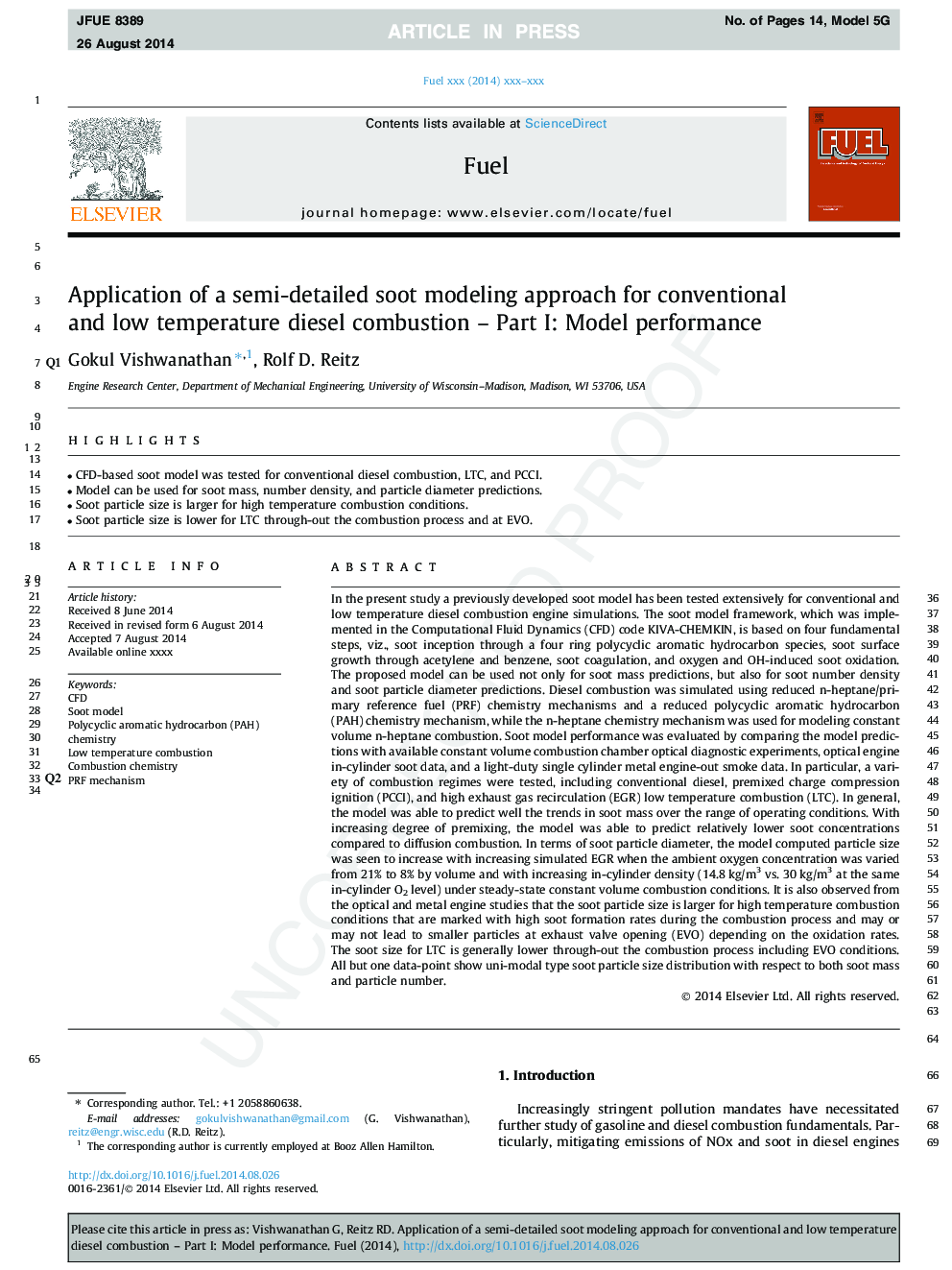| کد مقاله | کد نشریه | سال انتشار | مقاله انگلیسی | نسخه تمام متن |
|---|---|---|---|---|
| 6636600 | 461134 | 2015 | 14 صفحه PDF | دانلود رایگان |
عنوان انگلیسی مقاله ISI
Application of a semi-detailed soot modeling approach for conventional and low temperature diesel combustion - Part I: Model performance
ترجمه فارسی عنوان
استفاده از یک روش نیمه جامد مدل سازی گرما برای احتراق دیزل معمولی و کم دما - قسمت اول: عملکرد مدل
دانلود مقاله + سفارش ترجمه
دانلود مقاله ISI انگلیسی
رایگان برای ایرانیان
موضوعات مرتبط
مهندسی و علوم پایه
مهندسی شیمی
مهندسی شیمی (عمومی)
چکیده انگلیسی
In the present study a previously developed soot model has been tested extensively for conventional and low temperature diesel combustion engine simulations. The soot model framework, which was implemented in the Computational Fluid Dynamics (CFD) code KIVA-CHEMKIN, is based on four fundamental steps, viz., soot inception through a four ring polycyclic aromatic hydrocarbon species, soot surface growth through acetylene and benzene, soot coagulation, and oxygen and OH-induced soot oxidation. The proposed model can be used not only for soot mass predictions, but also for soot number density and soot particle diameter predictions. Diesel combustion was simulated using reduced n-heptane/primary reference fuel (PRF) chemistry mechanisms and a reduced polycyclic aromatic hydrocarbon (PAH) chemistry mechanism, while the n-heptane chemistry mechanism was used for modeling constant volume n-heptane combustion. Soot model performance was evaluated by comparing the model predictions with available constant volume combustion chamber optical diagnostic experiments, optical engine in-cylinder soot data, and a light-duty single cylinder metal engine-out smoke data. In particular, a variety of combustion regimes were tested, including conventional diesel, premixed charge compression ignition (PCCI), and high exhaust gas recirculation (EGR) low temperature combustion (LTC). In general, the model was able to predict well the trends in soot mass over the range of operating conditions. With increasing degree of premixing, the model was able to predict relatively lower soot concentrations compared to diffusion combustion. In terms of soot particle diameter, the model computed particle size was seen to increase with increasing simulated EGR when the ambient oxygen concentration was varied from 21% to 8% by volume and with increasing in-cylinder density (14.8Â kg/m3 vs. 30Â kg/m3 at the same in-cylinder O2 level) under steady-state constant volume combustion conditions. It is also observed from the optical and metal engine studies that the soot particle size is larger for high temperature combustion conditions that are marked with high soot formation rates during the combustion process and may or may not lead to smaller particles at exhaust valve opening (EVO) depending on the oxidation rates. The soot size for LTC is generally lower through-out the combustion process including EVO conditions. All but one data-point show uni-modal type soot particle size distribution with respect to both soot mass and particle number.
ناشر
Database: Elsevier - ScienceDirect (ساینس دایرکت)
Journal: Fuel - Volume 139, 1 January 2015, Pages 757-770
Journal: Fuel - Volume 139, 1 January 2015, Pages 757-770
نویسندگان
Gokul Vishwanathan, Rolf D. Reitz,
